James Gilliland is a minister, counselor, an internationally known lecturer, best-selling author with the books, Reunion with Source, Becoming Gods, and The Ultimate Soul Journey. coque iphone xr James appeared in Contact Has Begun, His Story, The History Channel, UFOs then and Now, UFO Hotspots, ABC, Fox News, BBC Danny Dyer Special, Paranormal State, have all featured James. He has appeared on Coast to Coast, Jeff Rense, and to numerous other radio shows. He is the host of, As You Wish Talk Radio, and Contact Has Begun.
UFOlogy
Steven M. Greer, MD – CSETI, UFOlogy
Steven M. coque iphone xs max Greer, MD is Founder of The Disclosure Project, The Center for the Study of Extraterrestrial Intelligence (CSETI) and The Orion Project. coque iphone 2019 Father of the Disclosure movement, he presided over the groundbreaking National Press Club Disclosure Event in May, 2001. Over 20 military, government, intelligence and corporate witnesses presented compelling testimony regarding the existence of extraterrestrial life forms visiting the planet, and the reverse engineering of the energy and propulsion systems of these craft. coque iphone 6 Over one billion people heard of the press conference through the original webcast and on subsequent media coverage on BBC, CNN, CNN Worldwide, Voice of America, Pravda, Chinese media, and media outlets throughout Latin America. The webcast had 250,000 people waiting online- the largest webcast in the history of the National Press Club at that time.
Erich von Däniken – Author, UFOlogist
Born on April 14th, 1935, in Zofingen, Switzerland, Erich von Däniken was educated at the College St-Michel in Fribourg, where already as a student he occupied his time with the study of the ancient holy writings. While managing director of a Swiss 5-Star Hotel, he wrote his first book, Chariots of the Gods, which was an immediate bestseller in the United States, Germany, and later in 38 other countries. In the United States, Erich von Däniken won instant fame as a result of the television special “In Search of Ancient Astronauts,” based upon his first book. In 1993, the German television station SAT-1 started a twenty-five part TV series with and by Erich von Däniken, entitled “Auf den Spuren der All-Mächtigen” (Pathways of the Gods). In 1996, the American TV company ABC/Kane produced a one-hour special, filmed all over the world, entitled Chariots of the Gods – The Mysteries Continue. This film was broadcast on the ABC network on September 26th 1996. In 1996/97 ABC/Kane produced another documentary with Erich von Däniken (seen on the Discovery Channel). In Germany, the biggest TV network, RTL, showed the film on November 26th, 1996. coque iphone 8 7.7 million viewers in Germany alone watched the program. Erich von Däniken’s latest book just translated and now published is: Remnants of the Gods. Many things exist in our prehistory, about which we do not have the faintest idea. Stone structures erected by master builders, mysterious underground complexes etc. acheter coque iphone Erich von Däniken’s publications are available from legendarytimesbooks.com, the online bookstore of his international research association A.A.S. coque iphone xs max R.A. / legendarytimes.com. Erich von Däniken’s books have been translated into 32 languages, and have sold 63 million copies worldwide. From his books two full-length documentary films have been produced: Chariots of the Gods and Messages of the Gods. Of the more than 3,000 lectures which Erich von Däniken has given in 25 countries, over 500 were presented at universities. Fluent in four languages, Erich von Däniken is an avid researcher and a compulsive traveller, averaging 100’000 miles each year to remote spots of the Earth. This enables him to closely examine the phenomena about which he writes. Today, Erich von Däniken lives in the small mountain-village of Beatenberg in Switzerland (40 miles from Berne, above the city of Interlaken). In 2003 the “Mysteries of the World Theme Park”, the Mystery Park, initialized by Erich von Däniken opened in Interlaken, Switzerland. A platform for the presentation and research of the mysteries of the world, including Paleo-SETI, the so called Ancient Astronaut Theory. 2009 the theme park changed its name from “Mystery Park” to “Jungfrau Park”. Airing in 2010, the ANCIENT ALIENS the documentation of the History channel started. coque iphone pas cher Season 3 of ANCIENT ALIENS – THE SERIES set to premiere SUMMER 2011 on the History Channel! So far, there have been two Seasons of ANCIENT ALIENS – THE SERIES, consisting of 22 hours of network television time! Season 1 featured six 2-hr episodes and Season 2 featured ten 1-hr episodes. In spring of 2011 the History Channel is producing another 15 parts for the extremely successful series Giorgio A. coque iphone soldes Tsoukalos of the Center for Ancient Astronaut Research and Publisher of Legendary Times Magazine served (and serves) as the series’ Consulting Producer. Season 1 and Season 2 are currently on reruns on the History Channel. In 1998, Erich von Däniken co-founded the Archaeology, Astronautics and SETI Research Association , A.A.S. R.A. which publishes the English journal Legendary Times™ reporting about the latest research in the Paleo-SETI field. Erich von Däniken has been married to Elisabeth Skaja since 1960. He has one daughter, Cornelia (born 1963), and two grandchildren. Von Däniken is a hobby-chef and a lover of Bordeaux wines. Erich von Däniken is a member of the Swiss writers association, the German writers association, and the International PEN-Club. He was awarded with an Honorary Doctorate degree by the “La Universidad Boliviana” (“Gral. coque iphone 6 Jose Ballivian, Doctor Honoris Causa: Trinidad, 12 de febrero de 1975″). [Image of Honorary Doctorate: front side and (with confirmations) back side.] He received the “Huesped Illustre” award from the cities of Ica and Nazca in Peru. coque iphone pas cher In Brazil he received the “Lourenço Filho” award in Gold and Platen, and in Germany he was awarded with the “Order of Gordon Bleu du Saint Esprit” (together with the German astronaut Ulf Merbold). In 2004 he was awarded with the “Explorers Festival” prize [Image: front side and (with explanations) back side.] . 2003: “Ideas Oscar” in Switzerland for Mysteries of the World Theme Park founder Erich von Däniken.
Giorgio A. Tsoukalos – Ancient Aliens
Giorgio A. coque iphone xs max Tsoukalos is the star and Consulting Producer of ANCIENT ALIENS – THE SERIES (2010-Present) and publisher of Legendary Times Magazine, the only Ancient Astronaut publication in the world. coque iphone pas cher Giorgio is the real-life Indiana Jones and he is changing the way the world thinks about the Ancient Astronaut Theory. coque iphone xr For over 16 years, Giorgio A. coque iphone pas cher Tsoukalos has been the Director of Erich von Daniken’s Center for Ancient Astronaut Research (A.A.S. coque iphone 2019 soldes R.A. coque iphone 8 – Archaeology, Astronautics and SETI Research Association). coque iphone 8 As the world’s leading Ancient Astronaut expert, Giorgio has starred in and appeared on The History Channel, the Travel Channel, the National Geographic Channel, the Sci-Fi Channel, Coast to Coast AM, and many other international television and radio programs such as ANCIENT ALIENS and UFO HUNTERS reporting about the latest discoveries in the Ancient Astronaut field.
George Noory – Host, Coast to Coast AM
George Noory, host of the nationally syndicated program, Coast to Coast AM, says if he weren’t a national radio talk show host he’d be in politics. Heard by millions of listeners, Coast To Coast AM airs on approximately 564 stations in the U.S., Canada, Mexico and Guam. coque iphone xr While hosting The Nighthawk, a wildly successful, late-night program on KTRS in St. Louis, Noory was recruited by Premiere Radio Networks to guest host on Coast to Coast AM with Art Bell. He became the permanent host of the phenomenally successful over-night program on January 1, 2003, following Bell’s retirement. soldes coque iphone 2019 Since then, Noory’s audience has continued to grow. Noory captivates program listeners with his discussions of paranormal phenomena, time travel, alien abductions, conspiracies and all things curious and unexplained. He is driven, he has said, by the desire to solve the great mysteries of our time. From his first days as a radio broadcaster he says, “I’ve wanted to cover stories that the mainstream media never touch—the unusual, the paranormal and things like that. I learned that broadcast was the best business for exploring these issues, and I’ve been doing it for 33 years.” He dates his interest in these matters to a book by Walter Sullivan, We Are Not Alone, that his mother gave him when he was 13. He was hooked.
The Fermi Paradox – Are We Alone?
Everyone feels something when they’re in a really good starry place on a really good starry night and they look up and see this:


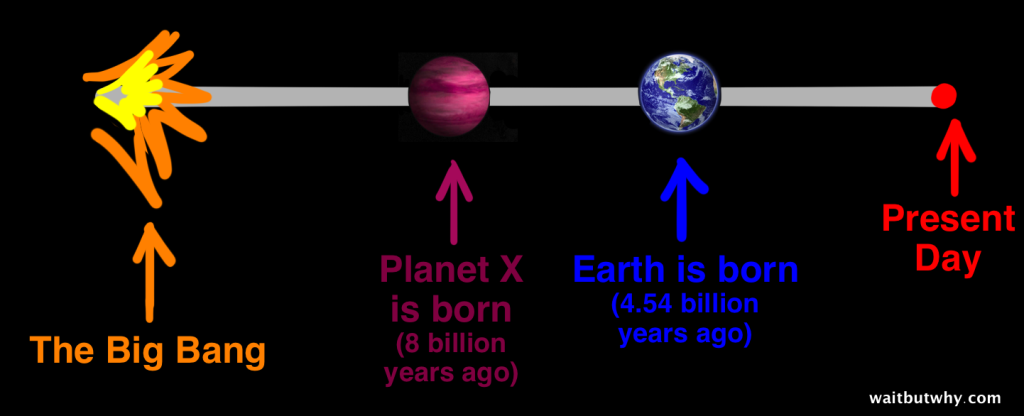
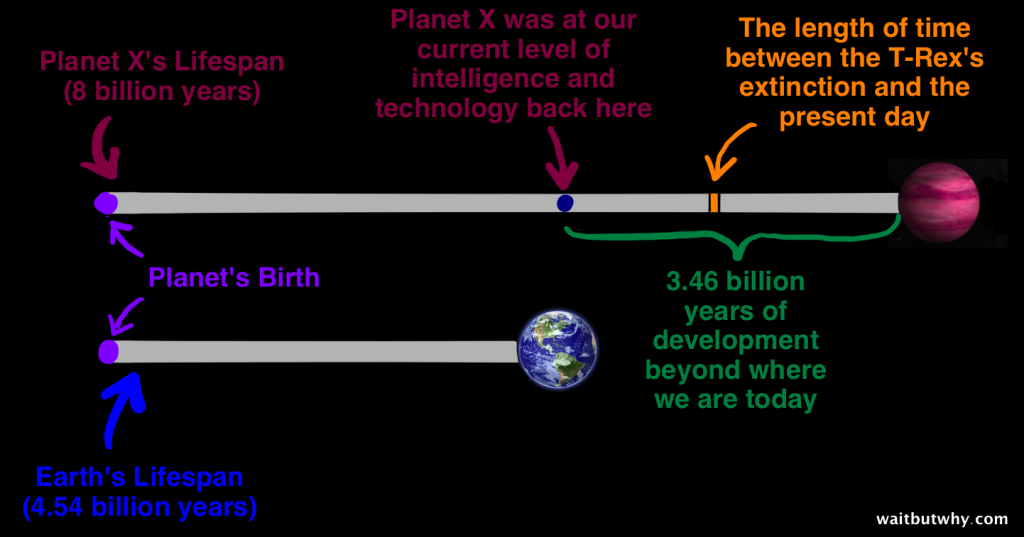
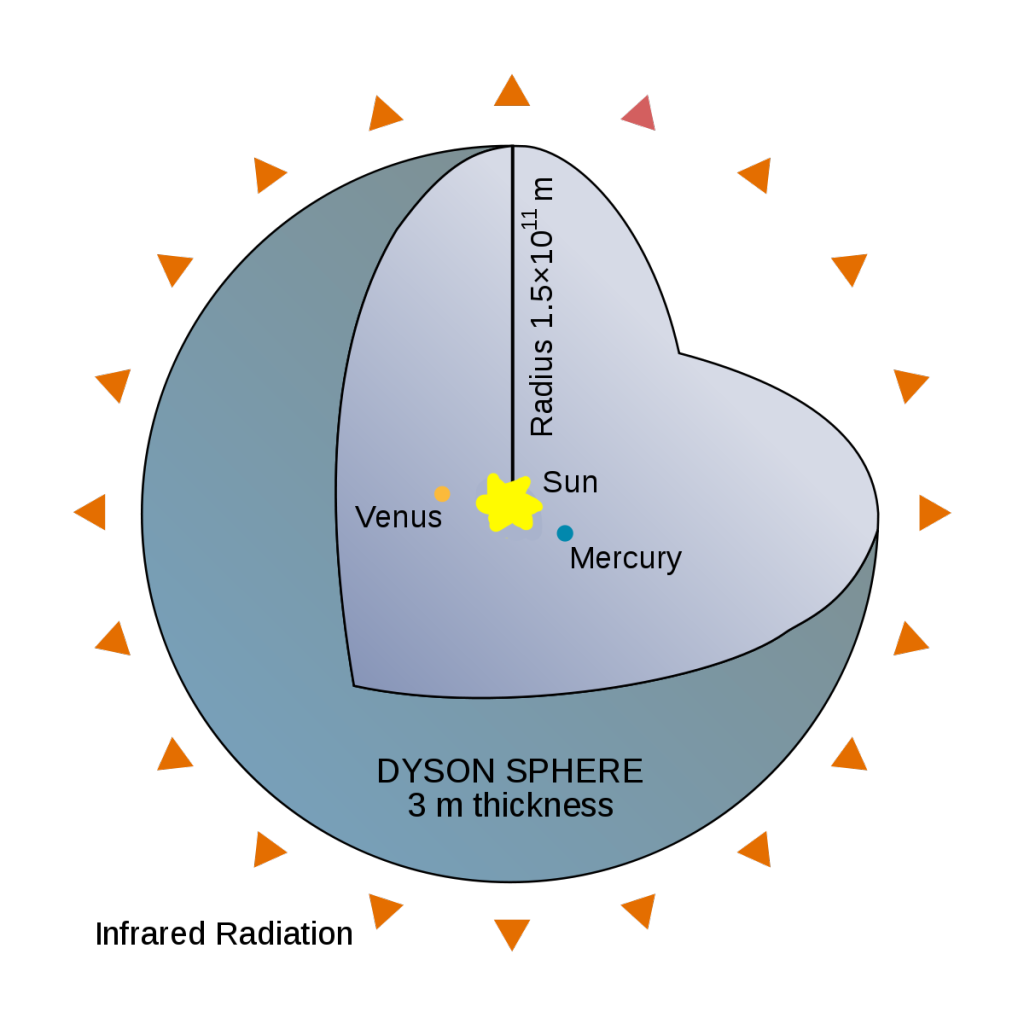

So where is everybody?
Explanation Group 1: There are no signs of higher (Type II and III) civilizations because there are no higher civilizations in existence.
Those who subscribe to Group 1 explanations point to something called the non-exclusivity problem, which rebuffs any theory that says, “There are higher civilizations, but none of them have made any kind of contact with us because they all _____.” Group 1 people look at the math, which says there should be so many thousands (or millions) of higher civilizations, that at least one of them would be an exception to the rule. Even if a theory held for 99.99 percent of higher civilizations, the other .01 percent would behave differently and we’d become aware of their existence. Therefore, say Group 1 explanations, it must be that there are no super-advanced civilizations. And since the math suggests that there are thousands of them just in our own galaxy, something else must be going on. This something else is called The Great Filter. The Great Filter theory says that at some point from pre-life to Type III intelligence, there’s a wall that all or nearly all attempts at life hit. There’s some stage in that long evolutionary process that is extremely unlikely or impossible for life to get beyond. That stage is The Great Filter.
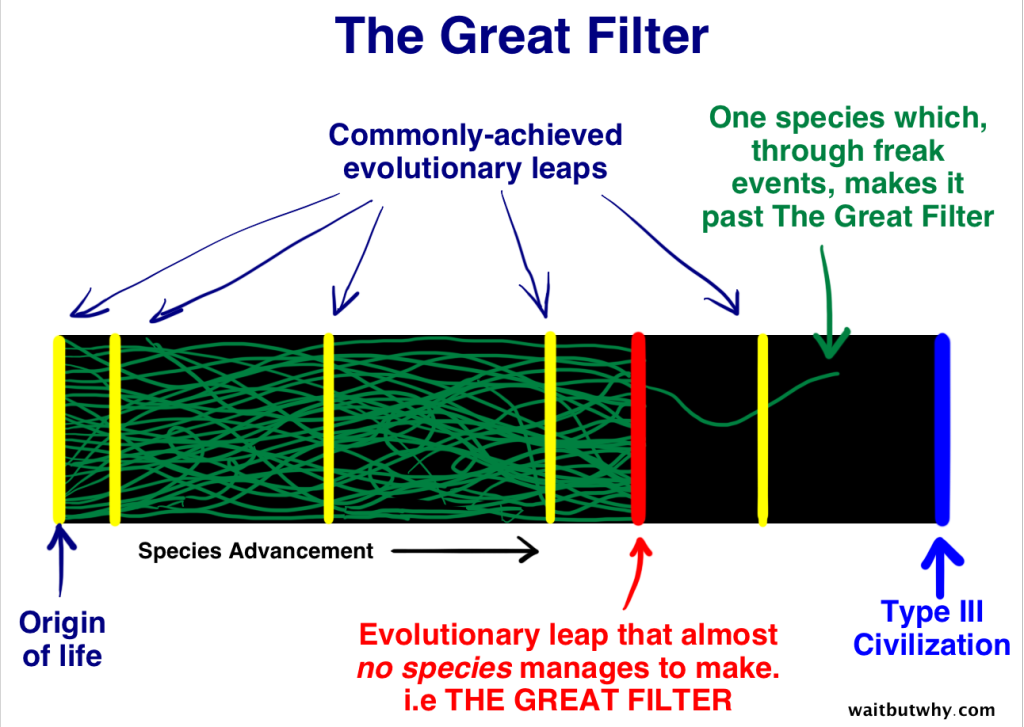
1. We’re Rare (The Great Filter is Behind Us)
One hope we have is that The Great Filter is behind us — we managed to surpass it, which would mean it’s extremely rare for life to make it to our level of intelligence. The diagram below shows only two species making it past, and we’re one of them. soldes coque iphone

2. We’re the First
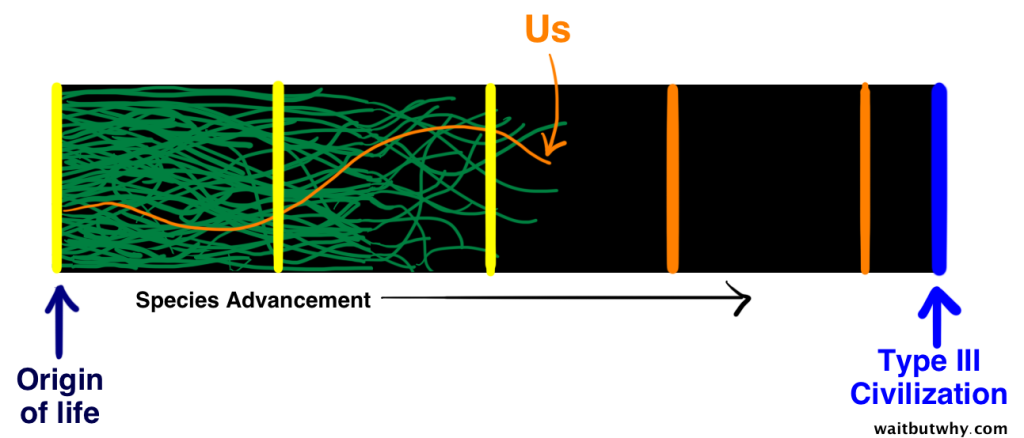
3. We’re Fucked (The Great Filter is Ahead of Us)
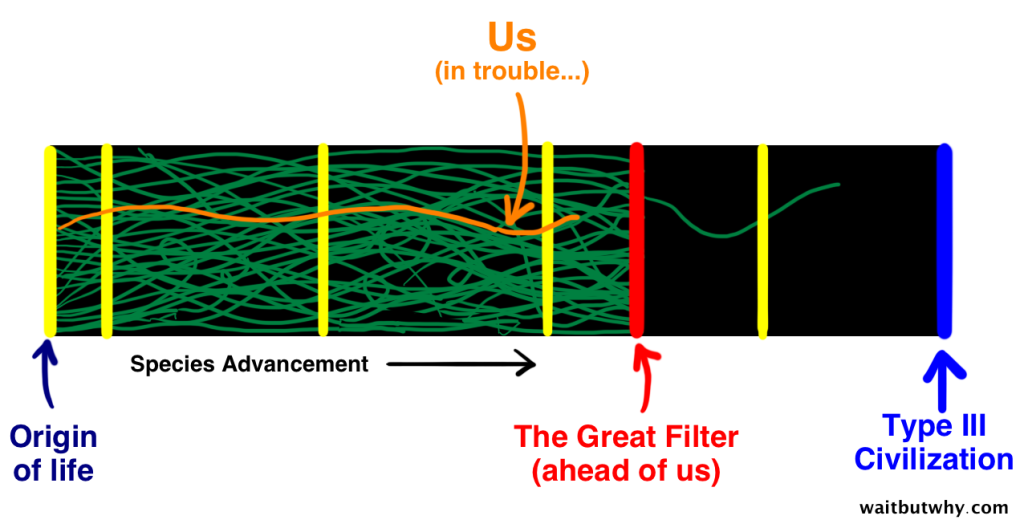
Explanation Group 2: Type II and III intelligent civilizations are out there — and there are logical reasons why we might not have heard from them.
Group 2 explanations get rid of any notion that we’re rare or special or the first at anything — on the contrary, they believe in the Mediocrity Principle, whose starting point is that there is nothing unusual or rare about our galaxy, solar system, planet, or level of intelligence, until evidence proves otherwise. They’re also much less quick to assume that the lack of evidence of higher intelligence beings is evidence of their nonexistence — emphasizing the fact that our search for signals stretches only about 100 light years away from us (0.1 percent across the galaxy) and suggesting a number of possible explanations. Here are 10: Possibility 1) Super-intelligent life could very well have already visited Earth, but before we were here. In the scheme of things, sentient humans have only been around for about 50,000, a little blip of time — if contact happened before then, it might have made some ducks flip out and run into the water and that’s it. Further, recorded history only goes back 5,500 years — a group of ancient hunter-gatherer tribes may have experienced some crazy alien shit, but they had no good way to tell anyone in the future about it. Possibility 2) The galaxy has been colonized, but we just live in some desolate rural area of the galaxy. The Americas may have been colonized by Europeans long before anyone in a small Inuit tribe in far northern Canada realized it had happened. There could be an urbanization component to the interstellar dwellings of higher species, in which all the neighboring solar systems in a certain area are colonized and in communication, and it would be impractical and purposeless for anyone to deal with coming all the way out to the random part of the spiral where we live. Possibility 3) The entire concept of physical colonization is a hilariously backward concept to a more advanced species. Remember the picture of the Type II Civilization above with the sphere around their star? With all that energy, they might have created a perfect environment for themselves that satisfies their every need. They might have crazy-advanced ways of reducing their need for resources and zero interest in leaving their happy utopia to explore the cold, empty, undeveloped universe. An even more advanced civilization might view the entire physical world as a horribly primitive place, having long ago conquered their own biology and uploaded their brains to a virtual reality, eternal-life paradise. Living in the physical world of biology, mortality, wants, and needs might seem to them the way we view primitive ocean species living in the frigid, dark sea. FYI, thinking about another life form having bested mortality makes me incredibly jealous and upset. Possibility 4) There are scary predator civilizations out there, and most intelligent life knows better than to broadcast any outgoing signals and advertise their location. This is an unpleasant concept and would help explain the lack of any signals being received by the SETI satellites. It also means that we might be the super naive newbies who are being unbelievably stupid and risky by ever broadcasting outward signals. There’s a debate going on currently about whether we should engage in METI (Messaging to Extraterrestrial Intelligence — the reverse of SETI) or not, and most people say we should not. Stephen Hawking warns, “If aliens visit us, the outcome would be much as when Columbus landed in America, which didn’t turn out well for the Native Americans.” Even Carl Sagan (a general believer that any civilization advanced enough for interstellar travel would be altruistic, not hostile) called the practice of METI “deeply unwise and immature,” and recommended that “the newest children in a strange and uncertain cosmos should listen quietly for a long time, patiently learning about the universe and comparing notes, before shouting into an unknown jungle that we do not understand.” Scary.[2] Possibility 5) There’s only one instance of higher-intelligent life — a “superpredator” civilization (like humans are here on Earth) — who isfar more advanced than everyone else and keeps it that way by exterminating any intelligent civilization once they get past a certain level. This would suck. The way it might work is that it’s an inefficient use of resources to exterminate all emerging intelligences, maybe because most die out on their own. But past a certain point, the super beings make their move — because to them, an emerging intelligent species becomes like a virus as it starts to grow and spread. This theory suggests that whoever was the first in the galaxy to reach intelligence won, and now no one else has a chance. This would explain the lack of activity out there because it would keep the number of super-intelligent civilizations to just one. Possibility 6) There’s plenty of activity and noise out there, but our technology is too primitive and we’re listening for the wrong things.Like walking into a modern-day office building, turning on a walkie-talkie, and when you hear no activity (which of course you wouldn’t hear because everyone’s texting, not using walkie-talkies), determining that the building must be empty. Or maybe, as Carl Sagan has pointed out, it could be that our minds work exponentially faster or slower than another form of intelligence out there — e.g. it takes them 12 years to say “Hello,” and when we hear that communication, it just sounds like white noise to us. Possibility 7) We are receiving contact from other intelligent life, but the government is hiding it. This is an idiotic theory, but I had to mention it because it’s talked about so much. Possibility 8) Higher civilizations are aware of us and observing us (AKA the “Zoo Hypothesis”). As far as we know, super-intelligent civilizations exist in a tightly-regulated galaxy, and our Earth is treated like part of a vast and protected national park, with a strict “Look but don’t touch” rule for planets like ours. coque iphone 6 We wouldn’t notice them, because if a far smarter species wanted to observe us, it would know how to easily do so without us noticing. Maybe there’s a rule similar to the Star Trek’s “Prime Directive” which prohibits super-intelligent beings from making any open contact with lesser species like us or revealing themselves in any way, until the lesser species has reached a certain level of intelligence. Possibility 9) Higher civilizations are here, all around us. But we’re too primitive to perceive them. Michio Kaku sums it up like this: Let’s say we have an ant hill in the middle of the forest. And right next to the ant hill, they’re building a ten-lane super-highway. And the question is “Would the ants be able to understand what a ten-lane super-highway is? Would the ants be able to understand the technology and the intentions of the beings building the highway next to them? So it’s not that we can’t pick up the signals from Planet X using our technology, it’s that we can’t even comprehend what the beings from Planet X are or what they’re trying to do. It’s so beyond us that even if they really wanted to enlighten us, it would be like trying to teach ants about the internet. Along those lines, this may also be an answer to “Well if there are so many fancy Type III Civilizations, why haven’t they contacted us yet?” To answer that, let’s ask ourselves — when Pizarro made his way into Peru, did he stop for a while at an anthill to try to communicate? Was he magnanimous, trying to help the ants in the anthill? Did he become hostile and slow his original mission down in order to smash the anthill apart? Or was the anthill of complete and utter and eternal irrelevance to Pizarro? That might be our situation here. Possibility 10) We’re completely wrong about our reality. There are a lot of ways we could just be totally off with everything we think. The universe might appear one way and be something else entirely, like a hologram. Or maybe we’rethe aliens and we were planted here as an experiment or as a form of fertilizer. There’s even a chance that we’re all part of a computer simulation by some researcher from another world, and other forms of life simply weren’t programmed into the simulation.
Video: David Wilcock, Author – UFOlogy
David Wilcock is the New York Times bestselling author of The Source Field Investigations, coque iphone 6 a scientific revelation of a coming Golden Age deemed “magnificent” by esteemed scholar Graham Hancock. David has appeared on seven episodes of Ancient Aliens on The History Channel and is in the final stages of developing a film and television series around his groundbreaking work in partnership with Jim Hart, coque iphone 7 screenwriter of the movie Contact and many others. coque iphone xs UFOlogy